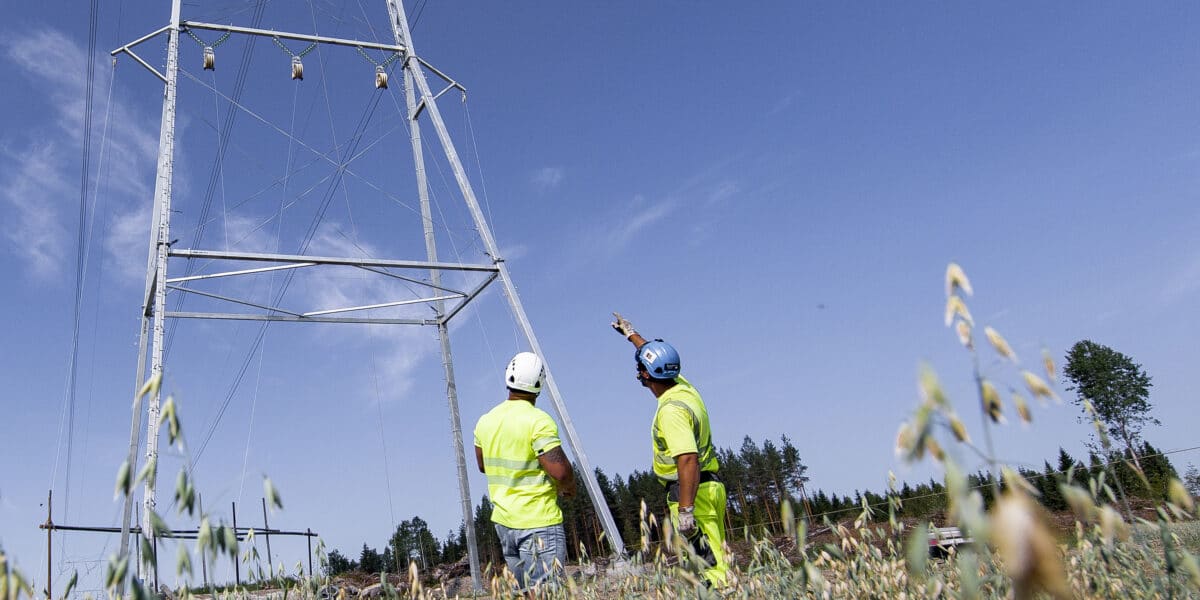Jani Pelvo, person in charge of operation of electrical installations at Fingrid, says that a precise protocol must be followed when working with high-voltage installations.
“Firstly, the team of technicians must ensure that they are on the right site. After that, they should check whether the site is partly energised.”
The next step is additional earthing, which conducts induced voltage to the ground.
“It is never possible to disconnect the voltage entirely from high-voltage installations, as nearby components that are energised by operating voltage can induce a voltage in such installations. These induced voltages can be lethal.”
Double the safety
Mobile earthing tools must be connected first to an earthing point and only then to the components that need to be earthed. The phase connectors of a mobile earthing tool must be connected and disconnected using an earthing stick.
According to Fingrid’s additional earthing rule for transmission lines, one additional earthing tool should be connected so that it is visible from the work location and another should be within one kilometre of the work location. Doubling up increases safety.
“Additional earthing is also required for substations if the work location is more than 50 metres from the main earthing connection.”
Fingrid requires all its service providers to follow the instructions.
“Additional earthing must be included in every work phase in the construction of transmission lines. For example, when a transmission line is cut, additional earthing must be installed on both sides of the cut-off
point.”
Accurate record-keeping, tests and training
Teemu Palosaari, Project Director at Destia, says that they follow Fingrid’s instructions to the letter. Destia also has its own practices for enhancing safety:
“We always make a plan for additional earthing and submit it to Fingrid for approval. Our team of
technicians carries out the additional earthing work and generally takes care of removing the earthing connections. They also keep a precise record of the relevant towers, dates and workers involved.”
Destia is introducing a system for marking additional earthings with Bluetooth tags.
“It provides more comprehensive information about the completed installations.”
The technicians check that the tools in each vehicle work flawlessly every week.
“We discuss earthing every day when we plan work phases, in kick-off meetings, during safety toolbox talks on the worksite and in personnel training,” Palosaari says.






